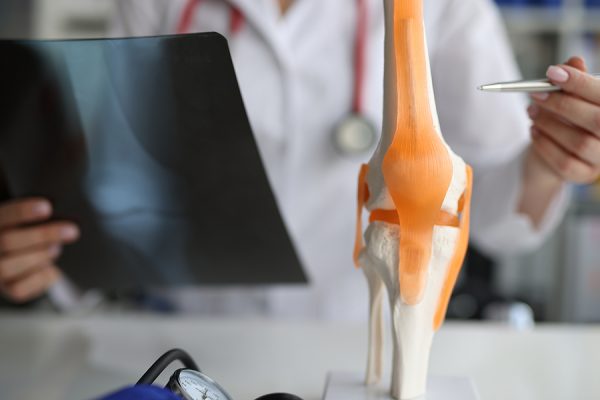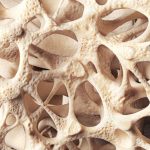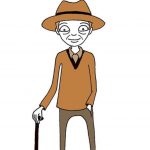By David Blyweiss, M.D., Advanced Natural Wellness
As we age, we reach the point where old bone breaks down faster than it’s being replaced. The result is osteoporosis… weak, brittle bones that break and fracture easily. And it’s not just women who are affected.
Around one in three men over the age of 50 already have low bone mass density. And by age 75, their risk of a hip fracture increases rapidly.
What can you do about it?
Resistance training, or weight bearing exercise, is a great place to start. Just like your muscles, bones need physical activity to regenerate and maintain. This type of exercise not only help muscles stay strong; it does the same for your bones.
So I’m often asked if walking or jogging with strap-on ankle and wrist weights can improve bone-building results.
In theory, it sounds like a good idea. According to the American Council on Exercise, using one-pound to three-pound weights increases heart rate by five to 10 beats per minute, and calorie expenditure and oxygen consumption by five to 15 percent.
But those strap-on weights come with an inherent problem. They disrupt normal body mechanics. So if you try to walk, jog, zumba or jazzercise with them on, they can strain the joints, tendons and muscles.
For wrist weights, this can lead to injuries of the wrists, elbows, shoulders and neck. For ankle weights, it increases the risk of tendon or ligament injuries to the knees, hips and back. Ankle weights also create a muscle imbalance in your quadriceps and hamstrings which can affect your balance and increase your risk of falls.
That doesn’t mean there isn’t a place for these types of weights in your life. They are terrific for targeted arm and leg exercises like wrist extensions, biceps curls, hamstring curls and leg lifts. These types of resistance exercise all work together to help fight osteoporosis and improve bone mineral density.
Just keep in mind that weights over three pounds can put too much stress on your muscles and joints, so stick with weights between one and three pounds. I recommend starting with one pound and building your way up to three.
The Weighted Vest is Perfect for Movement
The best type of weight to use for walking and other forms of movement is called a weighted vest. These things are great. Especially when it comes to stimulating the growth of new bone cells, improving bone mineral density and strengthening the hips.
These vests are exactly what they sound like. You slide it over your head, and then it has a large strap in the middle so that you can secure it in place. (They remind me of the Kevlar vests that police departments use.)
Most of them have a bunch of pockets where you place the weights. So let’s say you were to purchase a “20 lb. weighted vest” with removeable weights. It would have something like 10 pockets that each held a single two-pound sand pouch. But the sand pouches are removable.
So you could start off with no weights at all, then start adding them two pounds at a time.
But I do have a few cautions when it comes to buying and using a weighted vest.
First, never use a vest that is more than 10 percent of your bodyweight. If you weigh 170 pounds, the vest should not weigh more than 17 pounds. If you weigh 200 pounds, it shouldn’t weight more than 20 pounds.
Second, never use a vest if you have neck or back problems. They place pressure on the spine and can aggravate existing conditions. In that case, you may be better off with a weighted waist belt that will support your back without placing undo pressure on your spinal column.
Ramp Up Your Bone Nutrients
Strong bones aren’t just about calcium. It’s also about vitamin D, which is necessary to absorb calcium and phosphorous from the intestine.
And there’s vitamin K2. It increases something called osteocalcin, which keeps calcium out of the arteries and draws it into the bones where it belongs. It also helps reduce the bone-loss process and improves bone turnover.
And finally, we have magnesium. About 60% of total magnesium is stored in the bone and is essential to osteoblast and osteoclast cells. These are the cells that are responsible for bone formation and resorption.
So those are your big four bone protectors. Calcium, vitamin D3, vitamin K2 and magnesium.
Take care of your old bones, and they will carry you far!
Sources:
Osteoporosis or Low Bone Mass in Older Adults: United States, 2017–2018. Centers for Disease Control and Prevention. NCHS Data Brief No. 405, March 2021.
Hong AR, Kim SW. Effects of Resistance Exercise on Bone Health. Endocrinol Metab (Seoul). 2018;33(4):435-444.
Hakestad KA, Torstveit MK, Nordsletten L, Axelsson ÅC, Risberg MA. Exercises including weight vests and a patient education program for women with osteopenia: a feasibility study of the OsteoACTIVE rehabilitation program. J Orthop Sports Phys Ther. 2015 Feb;45(2):97-105, C1-4.
Snow CM, Shaw JM, Winters KM, Witzke KA. Long-term exercise using weighted vests prevents hip bone loss in postmenopausal women. J Gerontol A Biol Sci Med Sci. 2000 Sep;55(9):M489-91.
Khazai N, Judd SE, Tangpricha V. Calcium and vitamin D: skeletal and extraskeletal health. Curr Rheumatol Rep. 2008 Apr;10(2):110-7.
Plaza SM, Lamson DW. Vitamin K2 in bone metabolism and osteoporosis. Altern Med Rev. 2005 Mar;10(1):24-35.
Bügel S. Vitamin K and bone health. Proc Nutr Soc. 2003 Nov;62(4):839-43. Castiglioni S, Cazzaniga A, Albisetti W, Maier JA. Magnesium and osteoporosis: current state of knowledge and future research directions. Nutrients. 2013;5(8):3022-3033.






